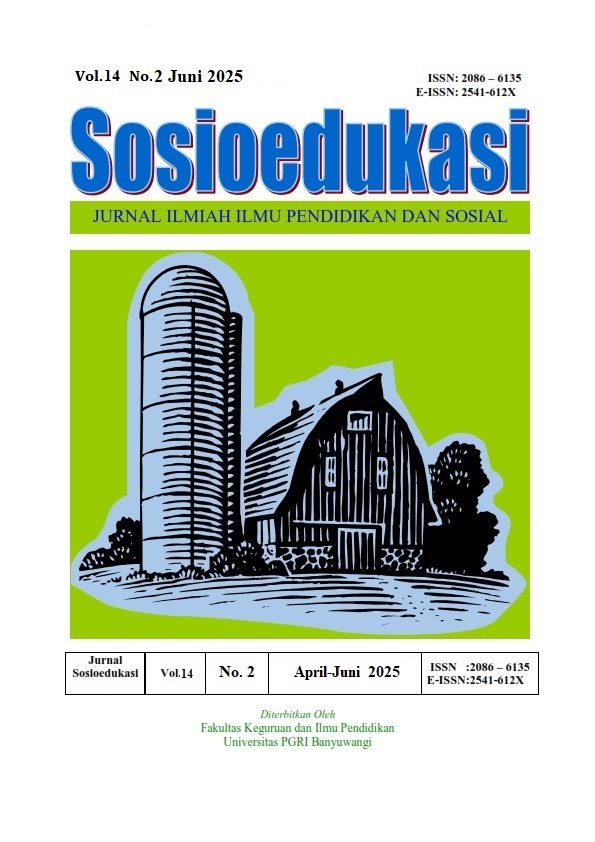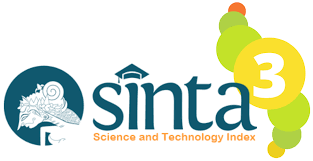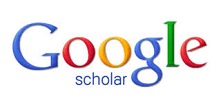THE IMPACT OF DISTORTED HISTORICAL INFORMATION IN TIKTOK VIDEOS ON STUDENTS' UNDERSTANDING OF HISTORY (Naturalistic Inquiry Study in Class XI SMAN 1 Garut)
DOI:
https://doi.org/10.36526/sosioedukasi.v14i3.5724Keywords:
Distortion of Historical Information, Students, Historical UnderstandingAbstract
Abstract in Historical distortions in social media content, particularly on TikTok, pose a new challenge in history education because the information disseminated is often simplistic, provocative, and lacking in historiographical accuracy. This study was motivated by the phenomenon of widespread historical content on TikTok that does not align with historical facts yet remains popular and trusted by students. The objective of this study is to examine the impact of historical distortion in TikTok content on students' understanding of history at SMA Negeri 1 Garut. The method used is qualitative with a naturalistic inquiry approach, focusing on in-depth interviews with students and history teachers, participatory observation, and document analysis of the historical content consumed by students. The results of the study indicate that most students are influenced by invalid historical content on TikTok, which leads to misinterpretations of historical events, weak critical thinking skills regarding sources, and the emergence of narrow and biased historical perceptions. On the other hand, teachers play a crucial role in countering such distortions through educational approaches that emphasize source clarification, open discussions, and media literacy enhancement. The conclusion of this study emphasizes that history education in the digital age must be accompanied by adaptive and critical pedagogical strategies, so that students can distinguish between valid and distorted historical narratives and grow into active subjects in building reflective and responsible historical understanding.
References
Bhardwaj, A. (2024). Fake social media news and distorted campaign detection framework using sentiment analysis & machine learning. Heliyon, 10, 1–17. https://doi.org/https://doi.org/10.1016/j.heliyon.2024.e36049
Bhat, R. M. (2023). Redressing Historical Bias: Exploring the Path to an Accurate Representation of the Past. Journal of Social Science, 4(3). https://doi.org/https://doi.org/10.46799/jss.v4i3.573
Chen, C. l. (2025). Distorted Realities: A Research Study of Media Exposure’s Role in Shaping Public and Personal Perceptions of Critical Health Issues. The National High School Journal of Science 2025, 1–8. https:/nhsjs.com
Hakiki, M. M. (2024). Reinterpretasi Sejarah Islam Di Era Digital. Prosiding Konferensi Nasional Mahasiswa Sejarah Peradaban Islam (KONMASPI), 501–508.
K, Wilson. D, Dudley. J, D. (2023). A systematic review of pedagogical interventions on the learning of historical literacy in schools. History Education Research Journal, 20(1), 1–27. https://doi.org/https://doi.org/10.14324/herj.20.1.09
Lincoln, & & Guba. (1985). Qualitative Research. Mc. Graw Hill Book Co.
Nippi, A. (2022). Historical Literacy and the Structuring Process of Historical Knowledge in Students. Κείμενα Παιδείας, 4. https://doi.org/https://doi.org/10.12681/keimena-paideias.30277
Permana, L. R. A. (2016). DISTORSI SEJARAH ISLAM PADA MASA AL-KHULAFĀ AR-RĀSYIDŪN DAN DAULAH UMAYYAH (Tinjauan Kritis Buku Ajar Sejarah Kebudayaan Islam Madrasah Aliyah). Profetika Jurnal Studi Islam. https://doi.org/https://doi.org/10.23917/profetika.v17i02.5298
Rahman, A., Kurniawati, & Winarsih, M. (2021). Penerapan Literasi Sejarah Dalam Pembelajaran Sejarah Pada Masa Pembelajaran Jarak Jauh di SMA. Jurnal Pendidikan Sejarah, 10(1), 57–76. https://doi.org/10.21009/jps.101.04
Rizal, A., Dwiyanti, A., & Burhan, B. (2024). Efektivitas Pemanfaatan Video TikTok sebagai Media Pembelajaran Pendidikan Kewarganegaraan untuk Meningkatkan Minat Belajar Mahasiswa. JIIP - Jurnal Ilmiah Ilmu Pendidikan, 7(9), 9545–9554. https://doi.org/10.54371/jiip.v7i9.5959
Sulistyaningrum, R., Hasanah, D., & Uswatun, S. (2024). Implementasi Media Sosial Tik Tok Dalam Pembelajaran Bahasa Indonesia di SD Muhammadiyah Pahonjean Dengan Perbantuan. 07(01), 6416–6424.
Supriatna, N. (2019). Pengembangan Kreativitas Imajinatif Abad Ke-21 Dalam Pembelajaran Sejarah. Historia: Jurnal Pendidik Dan Peneliti Sejarah, 2(2), 73. https://doi.org/10.17509/historia.v2i2.16629
Syahraini, K., Zakariah, A., & Novita. (2024). Peran Media Sosial terhadap Perilaku Peserta Didik di Era Globalisasi. Alfihris: Jurnal Inspirasi Pendidikan, 2(4), 118–128.
Wineburg, S. (2010). Historical thinking and other unnatural acts. Phi Delta Kappan, 92(4), 81–94. https://doi.org/10.1177/003172171009200420
Wulandari, V., Rullyana, G., & Ardiansah, A. (2021). Pengaruh algoritma filter bubble dan echo chamber terhadap perilaku penggunaan internet. Berkala Ilmu Perpustakaan Dan Informasi, 17(1), 98–111. https://doi.org/10.22146/bip.v17i1.423









.png)

















